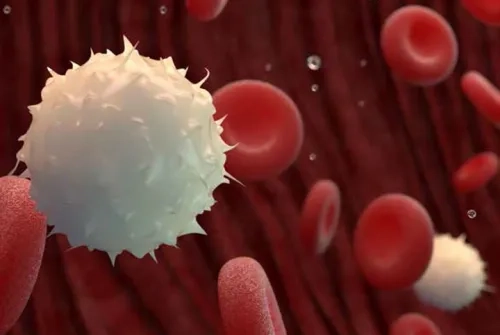Alo Yeditepe
Alo Yeditepe
Multiple Myeloma
Multiple myeloma is a cancer of plasma cells, one of the white blood cells. Plasma cells in the bone marrow normally take part in the production of antibodies and have an important role in the immune system. In multiple myeloma, abnormal plasma cells multiply uncontrollably and interfere with the reproduction of other normal blood cells in the bone marrow. It is slightly more common in men than in women.
What Are the Causes of Multiple Myeloma?
Although the reasons for the development of multiple myeloma have not yet been clearly clarified, the currently accepted factors include exposure to chemicals, petroleum, and radiation. Multiple myeloma is more common in people who eat mostly animal fat and overweight people compared to those who eat mostly vegetables and fish. Petroleum and leather industry and agricultural sector workers, especially nuclear industry workers, are considered to be risky sectors for the development of multiple myeloma.
What Are the Symptoms of Multiple Myeloma?
It can cause many different symptoms depending on the deterioration of the immune system, insufficient production of normal blood cells in the bone marrow, damage caused by abnormal plasma cells and the proteins they secrete, increased blood density, and damage to bones and kidneys. The most common symptoms are listed as follows.
- Bone pain (especially low back and back), easy bone fractures
- Weakness, fatigue
- Weakness in movement
- Weight loss and loss of appetite
- Decreased conscious capacity, drowsiness
- Excessive thirst and excessive urination
- Nausea, vomiting, and hazy vision
- Frequent febrile illness
Possible multiple myeloma disease should be kept in mind and diagnostic tests should be performed in people over 40 years of age who apply to the physician with complaints of weakness, low back/back pain, involuntary weight loss, and/or kidney failure.
How is Multiple Myeloma Diagnosed?
Although patients may rarely apply directly to the hematologist with characteristic symptoms of the disease and/or high sedimentation, they are usually referred to a hematologist due to unexplained kidney failure, blood count abnormalities, spine or rib fractures, by other branches of internal medicine or by orthopedics, physical therapy, and neurosurgery physicians.
Blood, urine, and imaging (radiological) examinations should be performed in people with suspected multiple myeloma disease, and additional bone marrow examination should be performed in those with continuing suspicion. With these tests, increased erythrocyte sedimentation rate, increase in monotype immunoglobulin protein (paraprotein) produced by abnormal plasma cells, lytic lesions in bones, and presence of increased abnormal plasma cells in bone marrow are investigated. The stage of the disease is determined according to the results of these examinations.
How Is Multiple Myeloma Treated?
Multiple Myeloma is a type of cancer that can remain undetected for a long time. Asymptomatic people with early-stage disease can be followed up without medication. Advanced-stage patients with disease-related symptoms need to be treated.
Treatment options are decided on a patient basis, in other words, according to the age, performance, co-morbidities, and stage of the disease.
Patients younger than 75 years of age who respond to treatment and have good organ functions (lung and heart) are treated with autologous (from himself/herself) bone marrow transplantation. Oral treatment is generally continued with non-chemotherapeutic drugs so that the disease does not recur after transplantation, and medication treatments are continued for patients who are not suitable for autologous blood stem cell transplantation. In case of recurrence or progression of the disease, the treatment is continued by combining medications that have not been used before. Rarely, young patients with a suitable donor are treated with allogeneic (from someone else) bone marrow transplantation.
Adjuvant treatment methods also have a place in the treatment of multiple myeloma. Radiation treatment can be given to bones with a high risk of fracture or tumoral masses called plasmacytomas that have created nerve compression, and blood and blood product support is provided when necessary. Supportive medications are used to increase bone density, increase red blood and protect against infections.
This content was prepared by Yeditepe University Hospitals Medical Editorial Board.
”
See Also
- Lymph Node Swelling
- Is Lymphoma (Lymph Cancer) a Treatable Disease?
- Hormone Disruptors
- Puberty
- Factors Affecting Growth in Children
- Thyroid Gland Diseases in Children
- Diabetes in Children
- What Diseases Does Stem Cell Transplantation Cure?
- Beware of Multiple Myeloma!
- Environmental Factors and Obesity Increase Risk of Multiple Myeloma
- Mistook It for Flu and Found Out She Had Stage 4 Lymphoma
- One-third of Obesity In Adults Begins in Childhood
- Caffeine Consumption in Children
- Symptoms of Bone Marrow Cancer
- Diabetes Mellitus and its Treatment
- Childhood Obesity and Nutritional Recommendations
- Causes and Treatment of Obesity in Children
- Obesity Increases Early Puberty
- Thyroid Hormone Deficiency May Cause Short Stature
Alo Yeditepe






